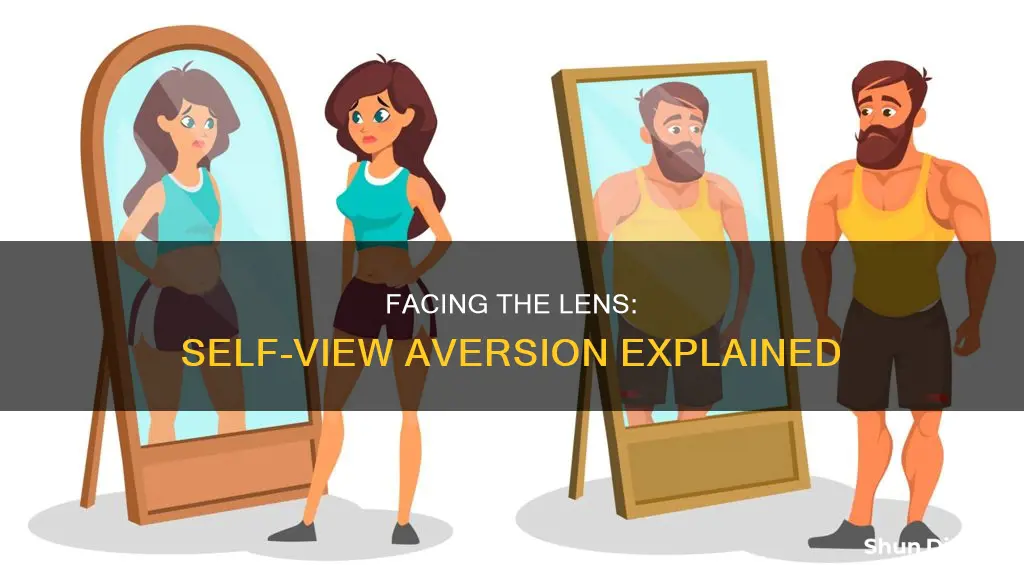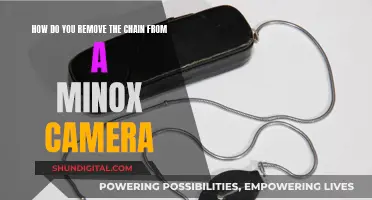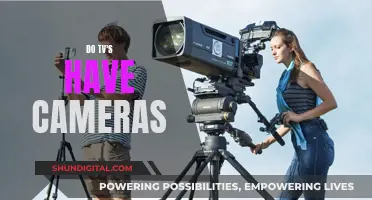
Many people dislike seeing themselves on camera, and there are several psychological reasons for this. Firstly, the mere-exposure effect suggests that people favour things they are more familiar with. Since we see our reflection in the mirror daily, this becomes our preferred self-image. However, the image we see in the mirror is a reversed version of how we appear to others and on camera. Thus, when we see ourselves on video or in photos, it looks off-kilter and a little strange to us. This is further exacerbated by the fact that our faces are not perfectly symmetrical, so the two versions of our faces – the mirrored one and the one captured on camera – differ in subtle but noticeable ways.
Additionally, confirmation bias plays a role in our dislike of seeing ourselves on screen. We tend to search for and focus on information that confirms our pre-existing beliefs. So, if we believe we are awkward on camera, we will look for evidence of that in the footage, ignoring any signs that contradict this belief.
Other factors that may contribute to our dislike of seeing ourselves on camera include the angle and lighting we are photographed from, lens distortion, and the distance we view the photograph from.
| Characteristics | Values |
|---|---|
| The Mere Exposure Effect | We are more attracted to things we are familiar with. We see our reflected self more often than our true self, so we prefer the reflected self. |
| Confirmation Bias | We search for and find information that backs up our previously held beliefs. We want to be right, so we look for information that will corroborate our thoughts. |
| Self-Enhancement Bias | We tend to evaluate our traits and abilities more favourably than is objectively warranted. |
| The Familiarity Principle | We tend to prefer people, objects, and products that we are more familiar with. |
What You'll Learn
- The Mere Exposure Effect: We are more attracted to the mirror image of ourselves, which is what we are used to seeing, rather than the un-flipped image we see on camera
- We aren't used to hearing our real voice: The sound of our voice that we hear through our skull and ear canals is deeper and more resonant than what we hear on camera
- Confirmation Bias: We search for and focus on information that confirms our previously held beliefs about our appearance
- Self-enhancement bias: We evaluate our traits and abilities more favourably than is objectively warranted, and so we are more critical of our appearance on camera
- Fear of judgment and rejection: There is a fundamental human need for social acceptance, so we worry about how others will perceive our appearance on camera

The Mere Exposure Effect: We are more attracted to the mirror image of ourselves, which is what we are used to seeing, rather than the un-flipped image we see on camera
The Mere-Exposure Effect, also known as The Familiarity Principle, is a phenomenon that explains why we are more attracted to the mirror image of ourselves than the un-flipped image we see on camera. This effect was first studied by American social psychologist Robert Zajonc in the late 1960s. Zajonc found that human beings tend to develop preferences for things simply because they are familiar with them. We have evolved to favour the familiar, which has likely kept us alive. For example, if we were running around the Sahara and encountered an unfamiliar situation, our fight or flight instinct would kick in, and we would run because we perceived potential danger.
The same thing happens when we look at ourselves on camera. Every day, we wake up and look at a mirrored image of ourselves when we get ready. We get used to the way we look in the mirror, and we become familiar and comfortable with that image. However, the way we look as perceived by others is the un-flipped, true image—what we see on camera. Due to the Mere-Exposure Effect, we favour the mirror image because it is what we are used to seeing.
Additionally, our faces are not symmetrical, so the mirror image and the un-flipped image will have slight differences, which can be imperceptible but are still detected by our brains. This is why we may feel that something looks "off" when we see ourselves on camera or in photos.
Interestingly, a study by Mita et al. at the University of Wisconsin-Milwaukee found that two-thirds of students preferred their mirror images over their actual photos when shown both at the same time. This preference is due to the Mere-Exposure Effect, as we are more familiar with our mirror image since we see it every day.
It is important to note that while we may be more attracted to our mirror image due to familiarity, everyone else in the world prefers the non-flipped, true image of us.
Smart TV Cameras: Do Roku Devices Have One?
You may want to see also

We aren't used to hearing our real voice: The sound of our voice that we hear through our skull and ear canals is deeper and more resonant than what we hear on camera
Many people dislike hearing their voice on camera, and this is completely normal. There are a few reasons for this, but one of the main ones is that we aren't used to hearing our real voice.
When we speak, the sound of our voice reaches our ears through two ways: air conduction and bone conduction. Air conduction is the sound that travels out from our vocal cords, through our lips and mouth, and into our ears or a recording device. Bone conduction is when our voice resonates within our skull, and we hear it internally through our bones and ear canals.
The combination of air and bone conduction is what we typically hear when we speak. However, when we hear a recording of our voice, we are only hearing the air conduction, without the deeper, more resonant tones created by bone conduction. This makes our voice sound higher and less rich than we are used to.
Additionally, the direction of the sound is different. When we speak, the sound is directed away from us, but when we listen to a recording, it's as if we are facing ourselves, which is an unusual perspective.
Our dislike for hearing our recorded voice can also be attributed to social conditioning and personal history. For example, people from minority groups may have received negative messages about the way they speak and internalized them. As a result, they may constantly modulate their speech to avoid negative feedback, which can be exhausting.
To get past this discomfort, one can try exposure therapy by recording themselves and listening to their voice more often. Detaching from one's voice by giving it another name or seeking an honest opinion from a trusted person can also help. Vocal coaching can also be beneficial, as it can help individuals make choices with their voice and speech to better engage their audience.
Toshiba 42TL515U TV: Is There a Built-in Camera?
You may want to see also

Confirmation Bias: We search for and focus on information that confirms our previously held beliefs about our appearance
Confirmation bias is a tendency humans have to search for, interpret, and recall information that confirms their pre-existing beliefs or values. In the context of appearance, confirmation bias means that we focus on aspects of our appearance that confirm our prior beliefs about how we look. For example, if we believe we have gained weight, we will focus on that when we see ourselves on camera. Similarly, if we believe we are awkward on camera, we will look for evidence of that when reviewing footage.
Confirmation bias is linked to our desire to be right. We seek out information that corroborates our thoughts because we believe we know best. Any information that confirms our beliefs is prioritised over information that contradicts them. This means we are constantly following a fallacy.
Our memory for feedback is also dependent on confirmation bias. A 1998 study by Amber Story of George Washington University found that our ability to remember feedback depends on whether that feedback aligns with our self-esteem. We are more likely to remember negative feedback that confirms our negative beliefs about our appearance, and forget positive feedback. Some people even seek out negative feedback to reinforce their negative self-perception.
Confirmation bias is one of many cognitive biases that disrupt rational thinking. Our brains use shortcuts to process the vast amount of information we are exposed to, and confirmation bias is one such shortcut. While these shortcuts can be life-saving in dangerous situations, they can also lead to irrational beliefs and behaviours.
To overcome the negative impact of confirmation bias, we need to become conscious of it and actively challenge our thoughts and beliefs. We can also try to refocus our attention away from the camera and towards delivering value to our audience. Additionally, it is important to remember that we are often our own harshest critics, and that others do not perceive us in the same biased way that we perceive ourselves.
Uncover Your Camera's WiFi Password: A Step-by-Step Guide
You may want to see also

Self-enhancement bias: We evaluate our traits and abilities more favourably than is objectively warranted, and so we are more critical of our appearance on camera
Self-enhancement bias refers to the tendency to evaluate our traits and abilities in a more favourable light than is objectively warranted. This bias is strategic in nature, emerging from our desire to maximise the positivity of our self-concept.
People tend to construct lofty, highly favourable self-views that surpass the objective reality. For example, we tend to think we are more attractive than we actually are. In a study by Epley and Whitchurch (2008), participants were shown manipulated photos of themselves that were altered to make them look more or less attractive. The participants consistently chose the photos that had been manipulated to be more attractive.
Self-enhancement bias can be understood through the lens of accuracy versus positivity. Accuracy refers to how well self-perceptions reflect objective reality, while positivity refers to how favourable self-perceptions are. Self-enhancement bias occurs when we prioritise positivity over accuracy, leading to self-perceptions that are positively biased.
This bias can have both positive and negative implications for our mental health. On the one hand, self-enhancement bias can promote psychological adjustment and mental health. On the other hand, it can also be linked to narcissism, defensiveness, and low resiliency.
The self-enhancement bias is particularly evident when we see ourselves on camera. We are used to seeing a mirrored reflection of ourselves, which is not our true appearance. When we see ourselves on camera, we are confronted with our actual appearance, which may not align with our self-perception. This discrepancy between our self-view and our true appearance can lead to increased self-criticism and dissatisfaction.
Xbox Camera: Watching You, But Why?
You may want to see also

Fear of judgment and rejection: There is a fundamental human need for social acceptance, so we worry about how others will perceive our appearance on camera
The fear of judgment and rejection is a fundamental aspect of human social needs, and it is understandable that people worry about how others will perceive their appearance on camera. This concern is heightened in professional contexts, where expectations of a polished and composed image may exist.
The desire for social acceptance is universal, and it is normal to seek validation from others. When it comes to our appearance, we often want to present ourselves in the best light possible. However, when we see ourselves on camera, it can be a jarring experience as we are confronted with a version of ourselves that we are not used to seeing. This can trigger insecurities and self-doubt, leading to a fear of negative judgment or rejection from others.
It is important to recognize that everyone has unique qualities and that our value is not solely based on our physical appearance. Embracing our individuality and focusing on our positive attributes can help us move beyond the fear of judgment and rejection. Additionally, understanding the psychological factors contributing to this fear can empower us to challenge and overcome these negative thoughts.
Furthermore, it is worth noting that our brains may be tricking us when we view ourselves on camera. Due to the "mere-exposure effect," we tend to prefer things that are familiar to us, including our mirror image. However, the image captured on camera is often our true image, which others see, and it may appear slightly different from our mirror reflection due to asymmetries in our faces. This discrepancy can contribute to the discomfort we feel when seeing ourselves on camera, but it is essential to remember that this discomfort is often more pronounced in our own minds than in the perception of others.
OLED TV Camera: Fact or Fiction?
You may want to see also
Frequently asked questions
The image you see on camera is not the image you are used to seeing. This is because of the "mere-exposure effect", a psychological phenomenon where we develop preferences for things we are more familiar with. In this case, the mirror image we see daily.
The way we hear our voice in our head is a combination of air and self-conduction. Air conduction is the sound that comes out of our mouth and into our ears, while self-conduction is the sound that reverberates within our skull. When we hear our voice played back on camera, we are only hearing the air conduction, which sounds different from what we are used to.
This is due to confirmation bias, which is our tendency to search for and find information that confirms our previously held beliefs. If you believe you are awkward on camera, you will look for evidence of that when watching the footage.
The more you expose yourself to seeing yourself on camera, the more familiar and comfortable it will become. You can also try refocusing your attention away from the camera, such as by concentrating on delivering value to your audience. Additionally, remember that you are likely the only person who feels this way about how you look on camera!







